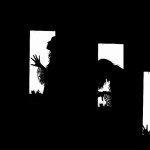The moral dilemma of sexual assault coverage
It was my first court reporting assignment in journalism school. I sat next to Christie Blatchford in the Toronto courtroom. We were a few metres away from a 15-year-old girl, watching her sob as she recounted the details of her rape and the murder of her best friend.
Beside me, reporters took notes and made sketches. I peeked at someone’s notebook and saw the words “gaping wounds” and “bloodied to a pulp.”
“This is good stuff,” someone whispered behind me.
I had to take slow breaths to keep myself from crying. When we were dismissed, I beelined for the exit, bumping into the victim’s father on the way out the door. He was trembling. I called my mom on the way home. “I hate journalists,” I told her. “I hate journalism! I shall become a painter instead.”
The first thing I learned about reporting is the importance of the little details; one must note the colour of the wallpaper, the dog’s name, the smell of the room. But I don’t understand why the public has to know all the details when it comes to sexual assault. As an example, take an excerpt from an assault case involving volleyball coach Luc Potvin: “He had groomed the victim over several months. He made her touch his genitals, simulated sex with her through their clothes, digitally penetrated her vagina and performed oral sex on her … mutual masturbation over the Internet in front of a webcam….”
I agree that the public should be aware of the actions of this man. Disclosing the information could embolden other victims to come forward. Perhaps you could argue that the victim remains “anonymous” to the reader. But her friends, her fellow high school students, her hometown residents, her relatives—they all read the article knowing it was her. They read about her engaged in these acts. It’s highly visual, so it’s difficult not to imagine what it was like, not to have a sick feeling in your stomach as images are conveyed through graphic language.
A recent article in the King’s Journalism Review by Marie Hanifen challenges the way journalists report sexual assault. In the article, Vancouver Rape Relief & Women’s Shelter organizer Lee Lakeman says she understands both the need for and the implications of courtroom transparency. “I don’t have a problem with graphic,” says Lakeman. “I have [a] problem with turning the violence into a kind of pornography rather than talking about violence as a force, and talking about who’s exercising that force.”















